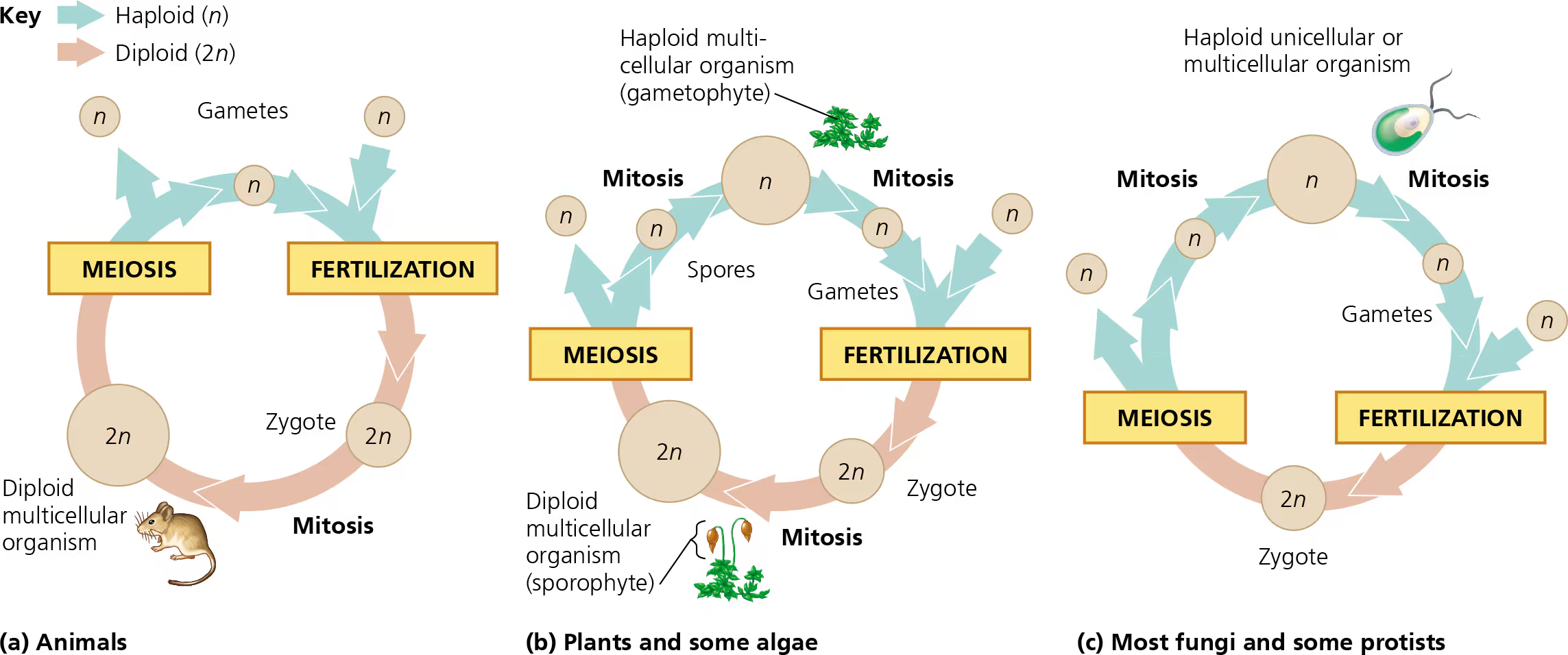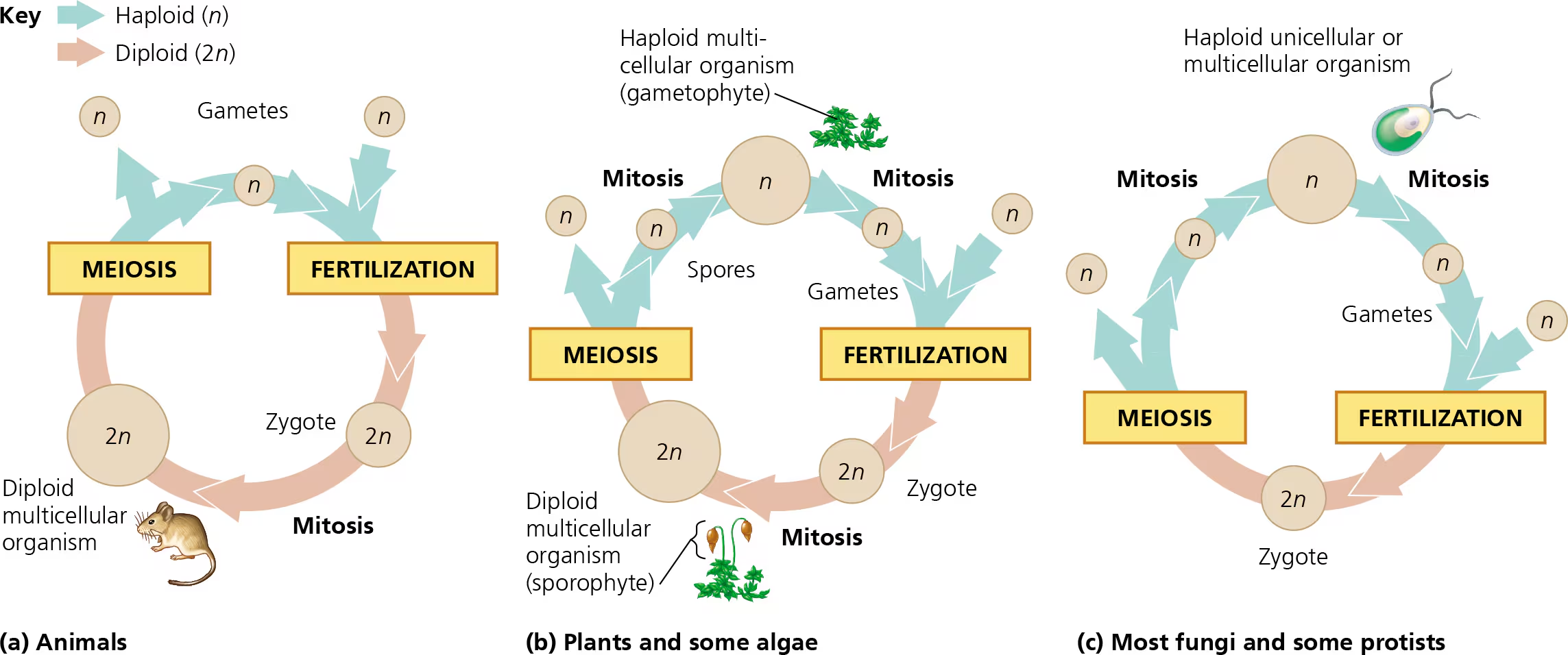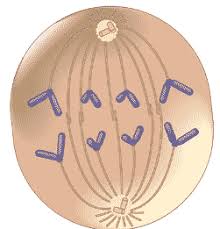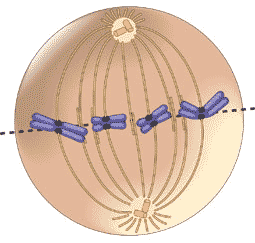Unit 5: Heredity - Ch. 10
1/24
Earn XP
Description and Tags
Name | Mastery | Learn | Test | Matching | Spaced |
|---|
No study sessions yet.
25 Terms
If a sexually reproducing organism has a diploid number of 36, how many individual chromosomes would any of its gametes have?
18 Chromosomes
Which of the following statements correctly describes the differences between sexual and sexual reproduction?
In sexual reproduction, offspring vary genetically from their siblings and both parents
Why are cells arrested at metaphase in the preparation of a karyotype?
All of their chromosomes are highly condensed and easy to visualize
Which of the following elements do all sexual life styles in eukaryotic organisms have in common?
Each cell has eight homologous pairs of chromosomes
Which of the following elements do all sexual life styles
meiosis, fertilization, and gametes
Which of the following statements about humans is true?
The 23rd Pair, the sex chromosomes, determines whether the person is female (XX) or male (XY)
In the life cycle of fungi and protists, which of the following processes leads to the formation of gametes?
meiosis in the diploid zygote
Which of the following statements is correct regarding the human X and Y chromosomes?
They are responsible for the determination of an individual’s sex
Which of the following types of cells would be produced by meiosis?
A haploid animal cell
A given organism has 46 chromosomes in its karyotype. Which of the following statements is correct regarding this organism?
Its gametes must have 26 chromosomes
Scientists have produced a hybrid plant that was the result of the fertilization of gametes between one plant with a diploid number of 24 an another with a diploid number of 20. How many chromosomes would the hybrid plant have?
22 chromosomes
Which of the following statements best describes a karyotype?
A display of all the chromosomes of a single cell
If a cell completed the first meiotic division and is just beginning meiosis II, which of the following statements describes the genetic or chromosomal contents of this cell?
It has half the amount of DNA of the cell that began mitosis
Which of the following events might result in a human zygote with 45 chromosomes?
an error in either egg or sperm meiotic anaphase
Which of the following processes happens during meiosis I?
Homologous chromosomes of a pair are separated from eachother
Which of the following events occurs in meiosis but not mitosis?
synapsis of pairs of homologous chromosomes
If chiasmata can be seen in a cell under a microscope, which of the following meiotic processes must have occurred?
prophase I
In a cell undergoing meiosis, if synaptonemal complexes form or are still present, what process or processes have occurred?
prophase I only
Independent assortment of chromosomes during meiosis is a result of
the random and independent way in which a pair of homologous chromosomes align at the metaphase plate during meiosis I
When homologous chromosomes cross over, what is the result?
Specific proteins break the 2 strands of nonsister chromatids and rejoin them

Refer to the life cycles illustrated in figure 10.6 above. Which of the life cycles is (are) typical for animals?
I only

Refer to the life cycles illustrated in figure 10.6 above. Which of the progression of events listed corresponds to the series of events that occurs in the life cycle of animals?
diploid multicellular organism, meiosis, fertilization, zygote, mitosis

Which phase of meiosis is represented above?
anaphase I

Which phase of meiosis is represented above?
metaphase II
A human cell containing 22 autosomes a Y chromosome is
A sperm